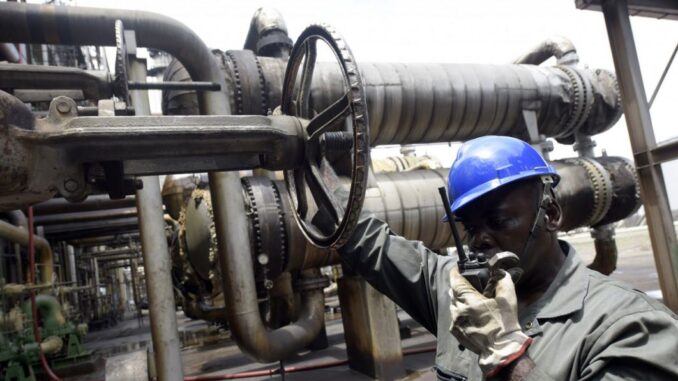
The decision by the Federal Government to rehabilitate the moribund Port Harcourt Refinery with a whopping $1.5 billion is a contradiction in terms of the country’s oil and gas sector. Coming after series of unsuccessful Turn-Around-Maintenance (TAM) programmes over the past 25 years which have gulped over $25 billion without any positive outcome, the government’s proposal is unrealistic and points to policy somersault given that the same government had, some months past, in the preparation of the 2021 federal budget, stated that it would dispose or sell off some public assets, including the refineries, to fund the 2021 federal budget. So, what has changed?
Addressing newsmen at the Presidential Villa, after a recent meeting of the Federal Executive Council, the Minister of State for Petroleum Resources, Timipre Sylva indicated that the contract for the rehabilitation of the 32-year old Port Harcourt Refinery has been awarded to one Italian firm, Tecnimont SPA, to be executed in three phases of 28 months, and 44 months respectively. By the plan, the refinery would be expected to attain a production level of 90 per cent of its nameplate capacity after the first phase. Currently, the Port Harcourt Refinery has a production capacity of 210 million barrels per day which it did not attain even in the good times of its operation. Furthermore, Mr. Sylva informed newsmen that discussions are ongoing for the rehabilitation of the other refineries.
Sylva’s announcement has since thrown up more questions than answers from stakeholders comprising oil industry experts, members of the organised private sector, labour activists and some groups in the Niger Delta Region, among others. The issues are germane. First, when did the government suddenly realise that the rehabilitation of the Port Harcourt refinery was the best policy option to take in the management of a moribund refinery? This is a refinery that has been known to be operating at a loss for many years. The refinery has reported a total loss of N229.14 billion in the past five-year period with loss of N50.53 billion in 2019, N45.59 billion in 2018, N53.77 billion in 2017, N43.44 billion in 2016 and N35.81 billion in 2015, according to data emanating from the Nigerian National Petroleum Corporation (NNPC). In fact, the combined losses of the three refineries in Port Harcourt, Warri and Kaduna were recorded as N206.6 billion in 2024, N252.8 billion in 2015, N290.6 billion in 2016, N412 billion in 2017 and N475 billion in 2018.
Despite processing no crude oil, these refineries cost the country over N10 billion in expenses annually. This has led to their shutdown to date. Government intention in addressing the issue has been that of embarking on a Build, Operate and Transfer (BOT) model before this latest bombshell by the Federal Executive Council, as announced by Mr. Sylva.
If the rehabilitation of the refinery is the best option, when was due diligence conducted on the state of the refineries or on the award of the contract? Why should government rehabilitate the refinery when it has been dysfunctional over the years despite series of TAM programmes? What has changed that the rehabilitation this time around will be different from what had happened in the past?
Nigerians need a well functional refinery but the way a refinery that has proved difficult to manage over the years is suddenly being packaged by the authorities is indeed suspect, particularly given the antecedents of similar gigantic projects in the history of the nation. Though the oncoming Dangote Refinery needs a strong competitor to mitigate the negative effects of its monopoly in the refining sector, on the welfare of the Nigerian people, this sudden drive to rehabilitate the refineries could have been subjected to a more rigorous process.
Focus should be on the pursuit of the country’s best interest at this period of its history. The antecedents of government in the maintenance and rehabilitation of huge projects, including refineries clearly does not signpost the protection of public interest. The case of the Ajaokuta Steel Mill and other moribund government projects should be quite instructive. Playing politics in a collapsing economic system is unfruitful both to the players as well as the society at large. The organised labour ought to be more responsive in this matter to protect public interest.
Many have correctly tagged this move by government as a waste of public funds, since the funds are expected to come from three sources namely the NNPC internally generated revenue, the Federal Government budget and a credit facility from the African Export-Import Bank in Cairo, Egypt. In view of the evidential wastefulness of spending such huge money to repair the Port Harcourt refinery, is a new refinery not more feasible? Alternatively, why can’t many modular refineries be built across the country?
Government also has the option to sell off the refineries, considering that the technology used in their construction is old and would likely preclude the execution of a good job. The country also runs the risk of incurring cost variations and a further drain on the public coffers. There is no need to rehabilitate and sell. It is better to sell off the plant and let the new owner or owners do the rehabilitation. Most of the refineries the world over are privately owned. It should be recalled that the Port Harcourt refinery was built privately, by British Petroleum without Nigeria’s money until it was nationalised. Nigeria should stop this continuous rigmarole and get serious with enhancing the meaningful development of this nation in the interest of the present generation as well as generations yet unborn.
END

Be the first to comment